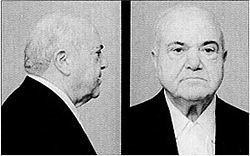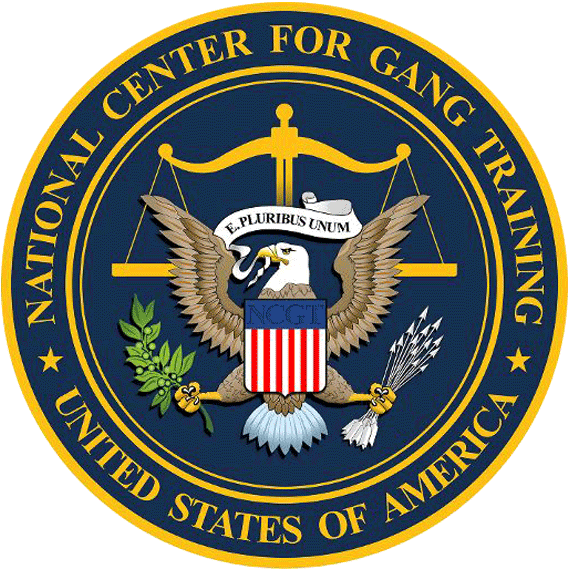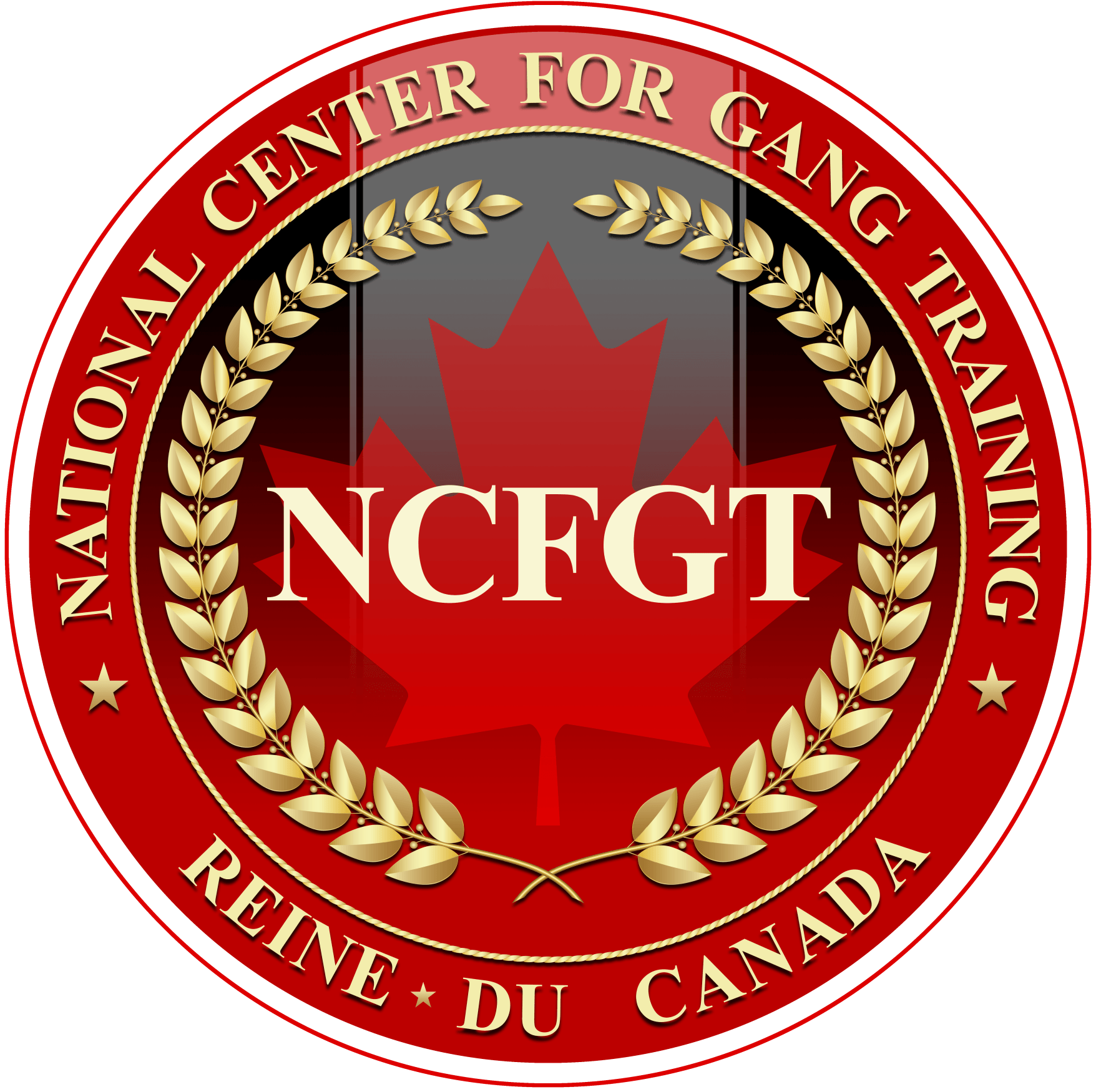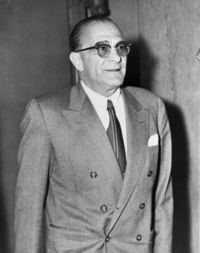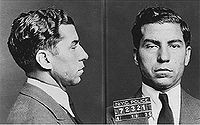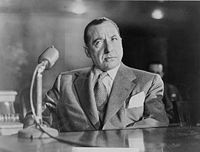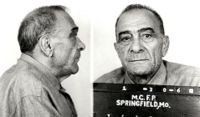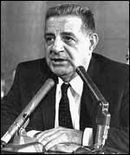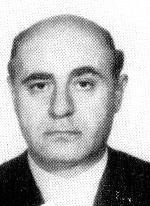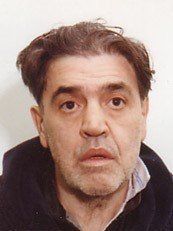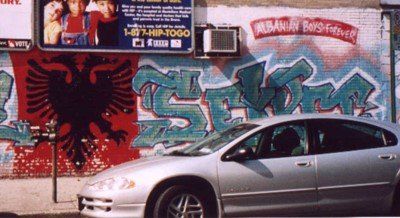Genovese crime family
Genovese crime family
The Genovese crime family is one of the "Five Families" that dominates organized crime activities in New York City, United States, within the nationwide criminal phenomenon known as the Mafia (or Cosa Nostra). The Genovese crime family has been nicknamed the "Ivy League" and "Rolls Royce" of organized crime. They are rivaled in size by only the Gambino crime family and Chicago Outfit and are unmatched in terms of power. They have generally maintained a varying degree of influence over many of the smaller mob families outside of New York, including ties with the Patriarca, Buffalo, Syracuse, Albany and Philadelphia crime families.
Finding new ways to make money in the 21st century, the Genovese family took advantage of lax due diligence by banks during the housing spike with a wave of mortgage frauds. Prosecutors say loan shark victims obtained home equity loans to pay off debts to their mob bankers. The family found ways to use new technology to improve on old reliable illegal gambling, with customers placing bets through offshore sites via the Internet. The modern family was founded by Lucky Luciano, but after 1957 it was renamed after boss Vito Genovese. Originally in control of the waterfront on the West Side of Manhattan (including the Fulton Fish Market), the family was run for years by "the Oddfather", Vincent "the Chin" Gigante, who feigned insanity by shuffling unshaven through New York’s Greenwich Village wearing a tattered bath robe and muttering to himself incoherently.
Although the leadership of the Genovese family seemed to have been in limbo after the death of Gigante in 2005, the family still appears to be the most organized family and remains powerful. The family, now named after Vito Genovese, has endured like no other. Unique in today's Mafia, the family has benefited greatly from members following the code of Omertà. While many mobsters from across the country have testified against their crime families since the 1980s, the Genovese family has only had five members turn state's evidence in its history.
History
Origins
Joseph Masseria
During the mid-1920s, Massaria continued to expand his bootlegging, extortion, loansharking, and illegal gambling rackets throughout New York. To operate and protect these rackets, Massaria recruited many ambitious young mobsters. These mobsters included future Cosa Nostra powers Charlie "Lucky" Luciano, Frank Costello, Frankie Yale, Joseph "Joey A" Adonis, Vito Genovese, Albert Anastasia and Carlo Gambino. Masseria was willing to take all Italian-American recruits, no matter where they had originated in Sicily or Italy.
Masseria's strongest rival in New York was Salvatore Maranzano, leader of the Castellammare del Golfo Sicilian organization in Brooklyn. A recent arrival from Sicily, Maranzano had strong support from elements of the Sicilian Mafia and was a traditionalist mafiosi. He recruited Sicilian mobsters only, preferably from the Castellammarese clan. Marangano's top lieutenants included future family bosses Joseph "Joe Bananas" Bonanno, Joseph Profaci, and Stefano Magaddino. By 1928, the Castellammarese War between Masseria and Maranzano had begun. By the late 1920s, more than 60 mobsters on both sides had been murdered. On April 15, 1931, Masseria was murdered in a Coney Island, Brooklyn, restaurant, reportedly by members of Luciano's crew. Angry over broken promises from Masseria, Luciano had secretly conspired with Maranzano to plot Masseria's assassination. On the day of the murder, Luciano was allegedly eating dinner with Masseria at a restaurant. After Luciano went to the restroom, his hitmen arrived and murdered Masseria. With Masseria's death, the Castellamarese War had ended.
Now in control of New York, Maranzano took several important steps to solidify his victory. He reorganized the Italian-American gangs of New York into five new families, structured after the hierarchical and highly disciplined Mafia families of Sicily. Maranzano's second big change was to appoint himself as the boss of all the families. As part of this reorganization, Maranzano designated Luciano as boss of the old Morello/Masseria family. However, Luciano and other mob leaders privately objected to Maranzano's dictatorial role. Maranzano soon found out about Luciano's discontent and ordered his assassination. Discovering that he was in danger, Luciano plotted Maranzano's assassination with Maranzano trustee Gaetano "Tommy" Lucchese. On September 10, 1931, Jewish gangsters provided by Luciano ally Meyer Lansky shot and stabbed Maranzano to death in his Manhattan office. Luciano was now the most powerful mobster in the United States.
Luciano and the Commission
"Lucky" Luciano in a police photo
After Maranzano's murder, Luciano created a new governing body for the Cosa Nostra families, the Commission. The Commission consisted of representatives from each of the Five Families, the Chicago Outfit and the Magaddino crime family of Buffalo, New York. Luciano wanted the Commission to mediate disputes between the families and prevent future gang wars. Although nominally a democratic body, Luciano and his allies actually controlled the Commission throughout the 1930s. As head of the new Luciano family, Luciano appointed Vito Genovese as his underboss, or second in command, and Frank Costello as his Consigliere, or advisor. With the new structure in place, the five New York families would enjoy several decades of peace and growth.
In 1935, Luciano was indicted on pandering charges by New York district attorney Thomas Dewey. Many observers believed that Luciano would never have directly involved himself with prostitutes, and that the case was fraudulent. During the trial, Luciano made a tactical mistake in taking the witness stand, where the prosecutor interrogated him for five hours about how he made his living. In 1936, Luciano was convicted and sentenced to 30 to 50 years in prison. Although in prison, Luciano continued to run his crime family. His underboss Genovese now supervised the day-to-day family activities. In 1937, Genovese was indicted on murder charges and fled the country to Italy. After Genovese's departure, Costello became the new acting boss of the Luciano family.
During World War II, federal agents asked Luciano for help in preventing enemy sabotage on the New York waterfront and other activities. Luciano agreed to help, but in reality provided insignificant assistance to the allied cause. After the end of the war, the arrangement with Luciano became public knowledge. To prevent further embarrassment, the government agreed to deport Luciano on condition that he never return to the United States. In 1946, Luciano was taken from prison and deported to Italy, never to return to the United States. Costello became the effective boss of the Luciano family.
The Prime Minister
Frank Costello at the Kefauver hearings.
During the reign of Frank Costello, the Luciano family controlled much of the bookmaking, loansharking, illegal gambling and labor racketeering activities in New York City. Costello wanted to increase the family involvement in lucrative financial schemes; he was less interested in low grossing criminal activities that relied on brutality and intimidation. Costello believed in diplomacy and discipline, and in diversifying family interests.
Nicknamed "The Prime Minister of the Underworld", Costello controlled much of the New York waterfront and had tremendous political connections. It was said that no state judge could be appointed in any case without Costello's consent. During the 1940s, Costello allowed Luciano associates Meyer Lansky and Benjamin "Bugsy" Siegel to expand the family business in Southern California and build the first modern casino resort in Las Vegas. When Siegel failed to open the resort on time, his mob investors allegedly sanctioned his murder.
While serving as boss of the Luciano family in the 1950s, Costello suffered from depression and panic attacks. During this period Costello sought help from a psychiatrist, who advised him to distance himself from old associates such as Genovese and spend more time with politicians. In the early 1950s, U.S. Senator Estes Kefauver of Tennessee began investigating organized crime in New York in the Kefauver hearings. The Committee summoned numerous mobsters to testify, but they refused to answer questions at the hearings. The mobsters uniformly cited the Fifth Amendment of the U.S. Constitution, a legal protection against self-incrimination. However, when Costello was summoned, he agreed to answer questions at the hearings and not take the Fifth Amendment. As part of the agreement to testify, the Special Committee and the U.S. television networks agreed not to broadcast Costello's face. During the questioning, Costello nervously refused to answer certain questions and skirted around others. When the Committee asked Costello, "What have you done for your country Mr. Costello?", he famously replied, "Paid my tax!". The TV cameras, unable to show Costello's face, instead focused on his hands, which Costello wrung nervously while answering questions. Costello eventually walked out of the hearings.
The return of Genovese
Costello ruled for 20 peaceful years, but that quiet reign ended when Genovese was extradited from Italy to New York. During his absence, Costello demoted Genovese from underboss to capo and Genovese determined to take control of the family. Soon after his arrival in the United States, Genovese was acquitted of the 1936 murder charge that had driven him into exile. Free of legal entanglements, Genovese started plotting against Costello with the assistance of Mangano crime family underboss Carlo Gambino. On May 2, 1957, Luciano family mobster Vincente "Chin" Gigante shot Costello in the side of the head on a public street; however, Costello survived the attack. Months later, Mangano family boss Albert Anastasia, a powerful ally of Costello, was murdered by Gambino's gunmen. With Anastasia's death, Gambino seized control of the Mangano family. Feeling afraid and isolated after the shootings, Costello quietly retired and surrendered control of the Luciano family to Genovese.
Vito Genovese in a police photo
Having taken control of what was now the Genovese crime family in 1957, Vito Genovese decided to organize a Cosa Nostra conference to legitimize his new position. Held on mobster Joseph Barbera's farm in Apalachin, New York, the Apalachin Meeting attracted over 100 Cosa Nostra mobsters from around the nation. However, local law enforcement discovered the meeting by chance and quickly surrounded the farm. As the meeting broke up, Genovese escaped capture by running through the woods. However, many other high-ranking mobsters were arrested. Cosa Nostra leaders were chagrined by the public exposure and bad publicity from the Apalachin meeting, and generally blamed Genovese for the fiasco. Wary of Genovese gaining more power in the Mafia Commission, Gambino used the abortive Apalachin Meeting as an excuse to move against his former ally. Gambino, former Genovese bosses Lucky Luciano and Frank Costello, and Lucchese crime family boss Tommy Lucchese allegedly lured Genovese into a drug distribution scheme that ultimately resulted in his conspiracy indictment and conviction. In 1959, Genovese was sentenced to 15 years in prison on narcotics charges. Genovese, who was the most powerful boss in New York, had been effectively eliminated as a rival by Gambino. Genovese would later die in prison.
The Valachi Hearings
Joseph Valachi at the McClellan Hearings
The Genovese family was soon rocked by a second public embarrassment: the United States Senate McClellan Hearings. While incarcerated at a federal prison in Atlanta, Genovese soldier Joseph "Joe Cargo" Valachi believed he was being targeted for murder by the mob on the suspicion that he was an informer. On June 22, 1962, Valachi brutally murdered another inmate with a pipe. Valachi told investigators that he thought the victim was Joseph "Joe Beck" DiPalermo, a Genovese soldier coming to kill him.
To avoid a capital murder trial, Valachi agreed to cooperate with federal prosecutors against the Genovese family. He thus became the first Cosa Nostra mobster to publicly affirm the organization's existence. With information from prosecutors, the low-level Valachi was able to testify in nationally-televised hearings about the Cosa Nostra's influence over legal enterprises in aid of racketeering and other criminal activities to make huge profit. Valachi also introduced the name "Cosa Nostra" as a household name. Although Valachi's testimony never led to any convictions, it helped law enforcement by identifying many members of the Genovese and other New York families.
Front bosses and the ruling panels
New York Police Department mugshot of Thomas Eboli
After Genovese was sent to prison in 1959, the family leadership secretly established a "Ruling Panel" to run the family in Genovese's absence. This first panel included acting boss Thomas "Tommy Ryan" Eboli, underboss Gerardo "Jerry" Catena, and Catena's protege Philip "Benny Squint" Lombardo. After Genovese died in 1969, Lombardo was named his successor. However, the family appointed a series of "Front Bosses" to masquerade as the official family boss. The aim of these deceptions was to confuse both law enforcement and rival crime families as to the true leader of the family. In the late 1960s, Gambino boss Carlo Gambino loaned $4 million to Eboli for a drug scheme in an attempt to gain control of the Genovese family. When Eboli failed to pay back his debt, Gambino, with Commission approval, murdered Eboli in 1972.
After Eboli's death, Genovese capo and Gambino ally Frank "Funzi" Tieri was appointed as the new front boss. In reality, the Genovese family created a new ruling panel to run the family. This second panel consisted of Catena, Michele "Big Mike" Miranda, and Lombardo. In 1981, Tieri became the first Cosa Nostra boss to be convicted under the new Racketeer Influenced and Corrupt Organizations Act (RICO). In 1982, Tieri died in prison. After Tieri went to prison in 1981, the Genovese family reshuffled its leadership. The capo of the Manhattan faction, Anthony Salerno ("Fat Tony"), became the new front boss. Lombardo, the defacto boss of the family, retired and Vincent "Chin" Gigante, the triggerman on the failed Costello hit, took actual control of the family. In 1985, Salerno was convicted in the Mafia Commission Trial and sentenced to 100 years in federal prison.
After the 1980 murder of Philadelphia crime family boss Angelo "Gentle Don" Bruno, Gigante and Lombardo began manipulating the rival factions in the war-torn Philadelphia family. Gigante and Lombardo finally gave their support to Philadelphia mobster Nicodemo "Little Nicky" Scarfo, who in return gave the Genovese mobsters permission to operate in Atlantic City in 1982.
The Oddfather
FBI mugshot of Vincent Gigante in his bathrobe.
After Vincent Gigante took over the Genovese family, he instituted a new "administration" structure. Former Salerno protègé Vincent Cafaro had turned informer and identified Gigante as the real boss to the FBI, so the use of front bosses no longer protected the real leader of the family. In addition, Gigante was unnerved by Salerno's conviction and long sentence, and decided he needed greater protection. Gigante decided to replace the front boss with a new street boss position. The job of the street boss was to publicly run the family operations on a daily basis, under Gigante's remote direction. To insulate himself even further from law enforcement, Gigante started communicating to his men through another new position, the messenger. As a result of these changes, Gigante did not directly communicate with other family mobsters, with the exception of his sons, Vincent Esposito and Andrew Gigante, and a few other close associates.
Another Gigante tactic to confuse law enforcement was by pretending insanity. Gigante frequently walked down New York streets in a bathrobe, mumbling incoherently. Gigante succeeded in convincing court-appointed psychiatrists that his mental illness was worsening, and avoided several criminal prosecutions. The New York media soon nicknamed Gigante "The Oddfather". Gigante reportedly operated from the Triangle Social Club in Greenwich Village in Manhattan. He never left his house during the day, fearing that the FBI would sneak in and plant a bug. At night, he would sneak away from his house and conduct family business when FBI surveillance was more lax. Even then, he only whispered to keep from being picked up by wiretaps. To avoid incrimination from undercover surveillance, family members were forbidden to speak Gigante's name under penalty of death. When necessary, mobsters would only point to their chins when referring to him. In this way, Gigante managed to stay on the streets while the city's other four bosses ended up getting long prison terms.
While the public and media were watching Gigante, other family leaders were running the day-to-day operations of the family. Underboss Venero "Benny Eggs" Mangano operated out of Brooklyn and ran the family's Windows Case rackets. Consigliere Louis "Bobby" Manna, who operated out of the New Jersey faction of the family, as well as supervising four captains around that area during the 1980s.
In 1985, Gigante and other family bosses were shocked and enraged by the murder of Paul Castellano, the Gambino family boss. An ambitious Gambino capo, John Gotti, had capitalized on discontent in that family to murder Castellano and his underboss outside a Manhattan restaurant and become the new Gambino boss. Gotti had violated Cosa Nostra protocol by failing to obtain prior approval for the murder from The Commission. Ironically, as mentioned above, Gigante had been the triggerman on the last unsanctioned hit on a boss—the hit on Costello. With Castellano dead, Gigante now controlled the Commission and he decided to kill Gotti. Gigante and Lucchese crime family boss Vittorio "Vic" Amuso and underboss Anthony "Gaspipe" Casso hatched a scheme to kill Gotti with a car bomb. On April 13, 1986, a bomb exploded in Gambino underboss Frank DeCicco's car, killing DeCicco. However, Gotti was not in DiCicco's car that day and escaped harm. Although Gigante eventually made peace with Gotti, Gigante remained the boss of the most powerful crime family in New York. The Genovese family dominated construction and union rackets, gambling rackets, and operations at the Fulton Fish Market and the waterfront operations. During this period, Gigante used intimidation and murder to maintain control of the family.
During the early 1990s, law enforcement used several high profile government informants and witnesses to finally put Gigante in prison. Faced with criminal prosecution, in 1992 Gambino underboss Salvatore "Sammy the Bull" Gravano agreed to testify against Gotti and other Cosa Nostra leaders, including Gigante. Philadelphia crime family underboss Phil Leonetti also became a government witness and testified that during the 1980s, Gigante had ordered the murders of several Philadelphia associates. Finally, Lucchese underboss Anthony Casso implicated Gigante in the 1986 plan to kill John Gotti, Frank DeCicco and Eugene "Gene" Gotti. While in prison, Gigante was recorded as saying that he'd feigned insanity for 40 years. In 1997, Gigante was convicted on racketeering and conspiracy charges and sentenced to 12 years in federal prison. While Gigante was in prison, the Genovese family was run by acting bosses Ernest Muscarella, Dominick Cirillo, and Gigante's brother Mario. On December 19, 2005, Gigante died in prison from heart disease.
Since the 1990s, infamous mobsters in top positions of the other Five Families of NYC have become informants and testified against many mobsters, putting bosses, capos, and soldiers into prison. The most prominent government witness was Bonanno crime family Boss Joseph "Big Joe" Massino, who started cooperating in 2005. Genovese Underboss Venero "Benny Eggs" Mangano, Consigliere Louis "Bobby" Manna, capo James Ida ("Little Jimmy") and street boss Liborio "Barney" Bellomo received lengthy prison sentences on murder, racketeering and conspiracy convictions. During the last decades, US law enforcement systematically broke down the Genovese crime family, as well as the other Mafia families. Despite these indictments the Genovese family remains a formidable power with as approximately 250 made men and 14 active crews as of 2005, according to Selwyn Raab.
Current position and leadership
When Vincent Gigante died in late 2005, the leadership went to Genovese capo Daniel "Danny the Lion" Leo, who was apparently running the day-to-day activities of the Genovese crime family by 2006. In 2006, Genovese underboss and former Gigante loyalist, Venero "Benny Eggs" Mangano was released from prison. That same year, former Gigante loyalist and prominent capo Dominick Cirillo was allegedly promoted to consigliere in prison. By 2008, the Genovese family administration was believed to be whole again. In March 2008, Leo was sentenced to five years in prison for loansharking and extortion. Underboss Venero Mangano is reportedly one of the top leaders within the Manhattan faction of the Genovese crime family. Former acting consigliere Lawrence "Little Larry" Dentico was leading the New Jersey faction of the family until convicted of racketeering in 2006. Dentico was released from prison in 2009. In July 2008, one-time Gigante street boss Liborio "Barney" Bellomo was paroled from prison after serving 12 years. What role Bellomo plays in the Genovese hierarchy is open to speculation, but he is likely to have a major say in the running of the family once his tight parole restrictions are over.
A March 2009 article in the New York Post claimed Daniel Leo was still acting boss despite his incarceration. It also estimated that the family consists of approximately 270 "made" members. The Genovese family maintains power and influence in New York, New Jersey, Atlantic City and Florida. It is recognized as the most powerful Cosa Nostra family in the United States. Since Gigante's reign, the Genovese family has been so strong and successful because of its continued devotion to secrecy. According to the FBI, many family associates don't know the names of family leaders or even other associates. This information lockdown makes it more difficult difficult for the FBI to gain incriminating information from government informants.
According to the FBI, the Genovese family has not had an official boss since Gigante's death. Law enforcement considers Leo to be the acting boss, Mangano the underboss, and Cirillo the consigliere. The Genovese family is known for placing top caporegimes in leadership positions to help the administration run the day-to-day activities of the crime family. At present,capos Bellomo, Ernest Muscarella, Cirillo, and Dentico hold the greatest influence within the family and play major roles in its administration. The Manhattan and Bronx factions, the traditional powers in the family, still exercise that control today.
Historical leadership
Boss (official and acting)
- 1890s–1909 — Giuseppe "the Clutch Hand" Morello — imprisoned in 1910
- 1910–1916 — Nicholas "Nick Morello" Terranova — murdered in 1916 during the Mafia-Camorra War
- 1916–1920 — Vincenzo "Vincent" Terranova — stepped down becoming underboss
- 1920–1922 — Giuseppe "the Clutch Hand" Morello — stepped down becoming underboss to Giuseppe Masseria in 1922
- 1922–1931 — Giuseppe "Joe the Boss" Masseria — murdered in 1931 during the Castellammarese War
- 1931–1946 — Charles "Lucky" Luciano — imprisoned in 1936, deported to Italy in 1946
- Acting 1936–1937 — Vito Genovese — fled to Italy in 1937 to avoid murder charge
- Acting 1937–1946 — Frank "the Prime Minister" Costello — became official boss after Luciano's deportation
- 1946–1957 — Frank "the Prime Minister" Costello — resigned in 1957 after assassination attempt
- 1957–1969 — Vito "Don Vito" Genovese — imprisoned in 1959, died in prison in 1969
- Acting 1959–1962 — Anthony "Tony Bender" Strollo — disappeared in 1962
- Acting 1962–1965 — Thomas "Tommy Ryan" Eboli — became front boss
- Acting 1965–1969 — Philip "Benny Squint" Lombardo — promoted to official boss
- 1969–1981 — Philip "Benny Squint" Lombardo — retired in 1981, died of natural causes in 1987
- 1981–2005 — Vincent "Chin" Gigante — imprisoned in 1997, died in prison in 2005
- Acting 1990–1992 — Liborio "Barney" Bellomo — promoted to street boss
- Acting 1997–1998 — Dominick "Quiet Dom" Cirillo — suffered heart attack and resigned 1998
- Acting 1998–2005 — Matthew "Matty the Horse" Ianniello — resigned when indicted in July 2005
- Acting 2005–2008 — Daniel "Danny the Lion" Leo — Imprisoned in 2008. Projected release date is January 25, 2013
Front boss and street boss
After Philip Lombardo replaced Thomas Eboli as effective boss in the mid-1960s, Lombardo decided that Eboli should continue to perform the outward functions of the boss while Lombardo secretly made all the decisions. Lombardo created this deception so as to divert law enforcement attention from himself to Eboli. The family maintained this "front boss" deception for the next 20 years. Even after government witness Vincent "Fish" Cafaro exposed this scam in 1988, the Genovese family still found this way of dividing authority useful. So, in 1992, the front boss position was replaced by that of "street boss". From 1998 to 2006, a committee of capos known as the "administration" conducted decision making for the family.
Front boss
- 1969–1972 — Thomas "Tommy Ryan" Eboli — murdered in 1972
- 1972–1980 — Frank "Funzi" Tieri — indicted under RICO statutes and resigned, died in 1981.
- 1981–1992 — Anthony "Fat Tony" Salerno — imprisoned in 1987, died in prison in 1992.
Street boss
- 1992–present — Liborio "Barney" Bellomo — imprisoned from 1996–2008.
- Co-Acting 1998–2002 – Ernest Muscarella and Frank Serpico – in 2002 both were indicted, and Serpico died of cancer.
- Acting 2003–2005 — Dominick "Quiet Dom" Cirillo — imprisoned in 2006
- Acting 2005–2008 — Mario Gigante
Underboss (official and acting)
Underboss - the number two position in the family (after the boss). Also known as the "capo bastone", the underboss ensures that criminal profits flow up to the boss. The underboss also oversees the selection of caporegimes and soldiers to carry out murders and other crimes for the family. When the boss dies, the underboss normally assumes control until a new boss is chosen (which in some cases is the underboss).
- 1903–1910 — Ignazio "the Wolf" Lupo — imprisoned 1910
- 1910-1916 — Vincenzo "Vincent" Terranova — became boss
- 1916-1920 — Ciro "The Artichoke King" Terranova — stepped down
- 1920-1922 — Vincenzo "Vincent" Terranova — murdered on May 8, 1922
- 1922-1930 — Giuseppe "Peter the Clutch Hand" Morello — murdered on August 15, 1930
- 1930-1931 — Joseph Catania — murdered on February 3, 1931
- 1931-1931 — Charles "Lucky" Luciano — became boss April 1931
- 1931-1936 — Vito Genovese — promoted to acting boss in 1936, fled to Italy in 1937
- 1936-1936 — Frank "Chee" Gusage
- 1937-1951 — Guarino "Willie" Moretti — murdered in 1951
- 1951-1957 — Vito Genovese — second time as underboss
- 1957-1972 — Gerardo "Jerry" Catena — also boss of the New Jersey faction; jailed from 1970 to 1972.
- 1972-1974 — Frank "Funzi" Tieri — promoted to front boss in 1974
- 1974-1975 — Carmine "Little Eli" Zeccardi
- 1975-1980 — Anthony "Fat Tony" Salerno — promoted to front boss
- 1980-1981 — Vincent "Chin" Gigante — promoted to official boss
- 1981-1987 — Saverio "Sammy" Santora — died of natural causes
- 1987–present — Venero Mangano — imprisoned in 1991, released December 2006
- Acting 1990-1997 — Michael "Mickey Dimino" Generoso — imprisoned in 1997
- Acting 1997-2003 — Joseph Zito
- Acting 2003-2005 — John "Johnny Sausage" Barbato — imprisoned in 2005
Consigliere (official and acting)
Consigliere - Also known as an advisor or "right-hand man," a consigliere provides counsel to the boss of the crime family. The consigliere ranks just below the boss in the family power structure, but does not have any family members reporting to him. Each family usually has one consigliere.
- 1931-1937 — Frank Costello — promoted to acting boss in 1937
- 1937-1957 — "Sandino" — mysterious figure mentioned once by Valachi
- 1957-1972 — Michele "Mike" Miranda — retired in 1972
- 1972-1975 — Anthony "Fat Tony" Salerno — promoted to underboss in 1975
- 1975-1978 — Antonio "Buckaloo" Ferro
- Acting 1978-1980 — Dominick "Fat Dom" Alongi
- 1980-1981 — Dominick "Fat Dom" Alongi
- 1981-1990 — Louis "Bobby" Manna — imprisoned in 1990
- Acting 1989-1990 — James "Little Guy" Ida — promoted to official consigliere
- 1990-1997 — James "Little Guy" Ida — imprisoned in 1997
- 1997–present — Lawrence "Little Larry" Dentico — imprisoned from 2006–2009
- Acting 2006–2009 — Dominick "Quiet Dom" Cirillo
Messaggero
Messaggero – The messaggero (messenger) functions as liaison between crime families. The messenger can reduce the need for sit-downs, or meetings, of the mob hierarchy, and thus limit the public exposure of the bosses. Boss Vincent Gigante was credited with inventing the messaggero position to avoid law enforcement attention.
- 1957-1970s - Michael "Mike" Genovese - he was Vito Genovese's younger brother.
- 1981-1997 - Dominick "Quiet Dom" Cirillo
- 1997-2003 - Andrew Gigante
Administrative capos
If the official boss dies, goes to prison, or is incapacitated, the family may assemble a ruling committee (or panel) of capos to help the acting boss, street boss, underboss, and consigliere run the family, and to divert attention from law enforcement.
- 1997-1998 — (eight-man committee) — Frank "Farby" Serpico, Ernest "Ernie" Muscarella, Pasquale "Patsy" Parello, Lawrence "Little Larry" Dentico, John "Johnny Sausage" Barbato, Alan "Baldie" Longo, Federico "Fritzy" Giovanelli and Daniel "Danny the Lion" Leo
- 1998-2001 — (seven-man committee) — Dominick "Quiet Dom" Cirillo, Ernest Muscarella, Pasquale Parello, Lawrence Dentico, John Barbato, Alan Longo and Daniel Leo
- 2001-2002 — (five-man committee) — Dominick Cirillo, Ernest Muscarella, Lawrence Dentico, John Barbato and Alan Longo
- 2002-2003 — (four-man committee) — Dominick Cirillo, Lawrence Dentico, John Barbato and Daniel Leo
- 2007–2010 — (three-man panel) — Tino "The Greek" Fiumara (died 2010) the other two are unknown.
Current family members
Administration
- Boss Vacant
- Acting Boss Daniel "Danny the Lion" Leo - belonged to the Purple Gang of East Harlem in the 1970s. In the late 1990s, Leo joined Vincent Gigante's circle of trusted capos. With Gigante's death in 2005, Leo became acting boss. In 2008, Leo was sentenced to five years in prison on loansharking and extortion charges. In March 2010, Leo received an additional 18 months in prison on racketeering charges and was fined $1.3 million. Leo is currently in prison.
- Street Boss Liborio "Barney" Bellomo - became Street boss in 1992 under boss Vincent Gigante. Bellomo was imprisoned from 1996 until July 2008.
- Underboss Venero "Benny Eggs" Mangano - became underboss in 1986 under boss Vincent Gigante. A Gigante loyalist, Mangano belonged to the West Side Crew. Mangano was sentenced to 15 years in prison for his involvement in the 1991 "Windows Case". He was convicted of extortion and attempting to manipulate the bidding process of window replacements within municipal housing projects. Released from prison in November 2006, Mangano is reportedly still a Manhattan faction leader.
- Consigliere Dominick "Quiet Dom" Cirillo - former capo and trusted aide to boss Vincent Gigante. Cirillo belonged to the West Side Crew and was known as one of the Four Doms; capos Dominick "Baldy Dom" Canterino, Dominick "The Sailor" DiQuarto and Dominick "Fat Dom" Alongi. Cirillo served as Acting Boss from 1997 to 1998, but resigned due to heart problems. In 2003, Cirillo became acting boss, resigned in 2006 due to his imprisonment on loansharking charges. In August 2008, Cirillo was released from prison. Law enforcement believes that Cirillo is still active in the family.
- New Jersey Faction Boss - Unknown - was Tino Fiumara until his death on September 16, 2010.
Capos
New York
Bronx faction
- Liborio "Barney" Bellomo – capo and current Street Boss, was also the acting boss and protégé of Vincent Gigante. He controls one of the most influential crews in the crime family, the Manhattan East Harlem and Bronx-based 116th Street Crew. Bellomo, in his early 50s, was released from prison in July 2008 and is a top candidate to become the new official boss.
- Joseph "Joe D" Dente Jr. – capo, operating in the Bronx. In December 2001, Dente and capos Rosario Gangi and Pasquale Parrello were indicted in Manhattan on racketeering charges. Dente was released from prison on April 29, 2009.
- Pasquale "Patsy" Parello – capo operating in the Bronx, owns a restaurant on Arthur Ave. In 2004, Parello was found guilty of loansharking and embezzlement along with capo Rosario Gangi. Parello was released from prison on April 23, 2008.
Manhattan faction
- Matthew "Matty the Horse" Ianniello – capo and former acting boss for Vincent Gigante, Ianniello is a longtime Manhattan faction leader who also operates in Brooklyn, Staten Island, Long Island, New Jersey and Connecticut. Iannello was imprisoned on extortion and racketeering charges and released on April 3, 2009.
- Rosario "Ross" Gangi – capo operating in Manhattan, Brooklyn, and New Jersey. Gangi was involved in extortion activities at Fulton Fish Market. He was released from prison on August 8, 2008.
- John "Johnny Sausage" Barbato – capo and former driver of Venero Mangano, involved in labor and construction racketeering with capos from the Brooklyn faction. He was imprisoned in 2005 on racketeering and extortion charges, and released in 2008.
- James "Jimmy from 8th Street" Messera – capo of the Little Italy Crew operating in Manhattan and Brooklyn. In the 1990s, Messera was involved in extorting the Mason Tenders union and was imprisoned on racketeering charges.
Brooklyn faction
- Alphonse "Allie Shades" Malangone – capo operating from Brooklyn and Manhattan. Malagone was very powerful in the 1990s, controlling gambling, loansharking, waterfront rackets and extorting the Fulton Fish Market. Malangone also controlled several private sanitation companies in Brooklyn through Kings County Trade Waste Association and Greater New York Waste Paper Association. Malagone was arrested in 2000 along with several Genovese and Gambino family members for their activities in the private waste industry.
- Anthony "Tico" Antico – capo involved in labor and construction racketeering in Brooklyn and Manhattan. In 2005, Antico and capos John Barbato and Lawrence Dentico were convicted of extortion charges. In 2007, Antico was released from prison. On March 6, 2010, Antico was charged with racketeering in connection with the 2008 robbery and murder of Staten Island jeweler Louis Antonelli. He was acquitted of murder charges, but found guilty of racketeering.
- Frank "Punchy" Illiano – capo operating in Brooklyn and Staten Island. Illiano was a high-ranking member of the Gallo crew in the Colombo crime family before switching to the Genovese family in the mid-1970s.
- Charles "Chuckie" Tuzzo – capo operating in Brooklyn and Manhattan. Tuzzo was involved in pump and dump stock schemes with capo Liborio "Barney" Bellomo. Tuzzo and acting street boss Ernest Muscarella infiltrated a International Longshoreman's Association (ILA) local in order to extort waterfront companies operating from New York, New Jersey and Florida. On February 2, 2006, Tuzzo was released from prison after serving several years on racketeering and conspiracy charges.
Queens faction
- Anthony "Tough Tony" Federici – capo in the Queens faction with alleged money laundering, bribery and loansharking activities. Owner of a Queens restaurant, Federici was honored in 2005 by Queens Borough President Helen Marshall for his community service.
New Jersey
The Genovese crime family is operating in New Jersey with five crews. According to the State of New Jersey Commission of Investigation, several other New York based Genovese family members run criminal activities in New Jersey. The family's power has traditionally been base in New York, but in recent years some of the New Jersey faction members have risen to acting positions within the family's hierarchy.
- (Acting) Stephen Depiro – acting capo of the "Fiumara crew". Depiro was overseeing the illegal operations in the New Jersey Newark/Elizabeth Seaport before Fiumara's death in 2010. It is unknown if Depiro still holds this position.
- (In prison) Angelo "The Horn" Prisco – capo of a "crew" operating in Hudson County waterfronts citys of Bayonne and Jersey City; Monmouth County and Florida. In 2009, Prisco was sentenced to life and is currently imprisoned in Florida.
- Ludwig "Ninni" Bruschi – capo of a "crew" operating in South Jersey Counties of Ocean, Monmouth, Middlesex, and North Jersey Counties of Hudson, Essex, Passaic and Union. He was indicted in June 2003 and paroled in April 2010.
- Unknown – after the death of capo Joseph "The Eagle" Gatto in April 2010 it is unknown who is controlling the old "Gatto crew" operating in Bergen and Passaic Counties.
- Silvio P. DeVita – capo of a "crew" in Essex County.
- Lawrence "Little Larry" Dentico – capo operating in South Jersey and Philadelphia. Dentico was acting consigliere from 2003 through 2005, when he was imprisoned on extortion, loansharking and racketeering charges. Released from prison on May 12, 2009.
Soldiers
New York
- Salvatore "Sammy Meatballs" Aparo – former acting capo of the Gangi crew who operated large loansharking and labor rackets. In October 2002, he was sentenced to five years in federal prison for racketeering. On May 25, 2006, Aparo was released from prison.
- Ralph Anthony "the Undertaker" Balsamo (born in 1971) - Bronx and Westchester soldier who works closely with Liborio Bellomo. Runs a funeral parlor where family meetings are held and is known as "the Undertaker". Pleaded guilty in 2007 to narcotics trafficking, firearms trafficking, extortion, and union-related fraud and sentenced to 97 months in prison. Currently imprisoned in a low security prison facility in Petersburg and is set to be released on March 9, 2013.
- Louis DiNapoli - soldier with his brother Vincent DiNapoli's 116th Street crew.
- Vincent "Vinny" DiNapoli - soldier and former capo with the 116th Street Crew. DiNapol is heavily involved in labor racketeering and has reportedly earned millions of dollars from extortion, bid rigging and loansharking rackets. DiNapoli dominated the N.Y.C. District Council of Carpenters and used them to extort other contractors in New York. DiNapoli's brother, Joseph DiNapoli, is a powerful capo in the Lucchese crime family.
- Albert "Kid Blast" Gallo – acting capo of the Illiano crew in the South Brooklyn neighborhoods of Carroll Gardens, Red Hook, and Cobble Hill. Gallo runs gambling and loan sharking operations in Brooklyn, Manhattan and Staten Island. In the mid-1970s, Gallo transferred from the Gallo crew of the Colombo crime family to the Genovese family and became a made member.
- John "Little John" Giglio - soldier involved in loansharking.
- Federico "Fritzy" Giovanelli - soldier who was heavily involved in loansharking, illegal gambling and bookmaking in the Queens/Brooklyn area. Giovanelli was charged with the January 1986 killing of Anthony Venditti, an undercover NYPD detective, but was eventually acquitted. One known soldier in Giovanelli's crew was Frank "Frankie California" Condo. In 2001, Giovanelli worked with soldier Ernest "Junior" Varacalli in a car theft ring.
- Alan "Baldie" Longo – acting capo of the Malangone crew, he was involved in stock fraud activities and white-collar crime in Manhattan and Brooklyn. He was imprisoned on loansharking and racketeering charges, sentenced to 11 years, released in June 2010.
- Ernest "Ernie" Muscarella – former acting capo of the 116th Street crew in the Manhattan faction. Muscarella served as acting street boss for Vincent Gigante and Dominick Cirillo in 2002 until his racketeering conviction. He was released from prison on December 31, 2007, and is still active in the family.
- Joseph Olivieri - soldier, operating in the 116th Street Crew under Capo Louis Moscatiello. Olivieri has been involved in extorting carpenters unions and is tied to labor racketeer Vincent DiNapoli. Was convicted of perjury and was released from Philadelphia CCM on January 13, 2011.
- Daniel "Danny" Pagano - former acting capo of the Westchester County-Rockland County crew. Pagano was involved in the 1980s bootleg gasoline scheme with Russian mobsters. In 2007, Pagano was released after serving 105 months in prison.
- Charles Salzano - A soldier released from prison in 2009 after serving 37 months on loan sharking charges.
- Joseph Zito - soldier in the Manhattan faction (the West Side Crew) under capo Rosario Gangi. Zito was involved in bookmaking and loansharking business. Law enforcement labeled Zito as acting underboss from 1997 through 2003, but he was probably just a top lieutenant under official underboss Venero "Benny Eggs" Mangano. In the mid-1990s, Zito frequently visited Mangano in prison after his conviction in the Windows Case. Zito relayed messages from Mangano to the rest of the family leadership.
New Jersey
- Anthony Palumbo - former acting capo in the New Jersey faction. Palumbo was promoted acting boss of the New Jersey faction by close ally and acting boss Daniel "Danny the Lion" Leo. On February 2, 2009, Palumbo was released from prison.
Florida
- Albert "Chinkie" Facchiano - operated in South Florida until his 2007 arrest, is now considered retired.
Other territories
The Genovese family operates primarily in the New York City area; their main rackets are illegal gambling and labor racketeering.
- New York City - The Genovese family operates in all five boroughs of New York as well as in Suffolk, Westchester, Rockland, and Orange Counties in the New York suburbs. The family controls many businesses in the construction, trucking and waste hauling industries. It also operates numerous illegal gambling, loansharking, extortion, and insurance rackets. Small Genovese crews or individuals have operated in Albany, Syracuse, Delaware County, and Utica. The Buffalo, Rochester and Utica crime families or factions traditionally controlled these areas.
- Massachusetts - Springfield, Massachusetts has been a Genovese territory since the family's earliest days. The most influential Genovese leaders from Springfield were Salvatore "Big Nose Sam" Curfari, Francesco "Frankie Skyball" Scibelli, Adolfo "Big Al" Bruno, and Anthony Arillotta (turned informant 2009). In Worcester, Massachusetts, the most influential capos were Frank Iaconi and Carlo Mastrototaro. In Boston, Massachusetts, the New England or Patriarca crime family from Providence, Rhode Island has long dominated the North End of Boston, but has been aligned with the Genovese family since the Prohibition era. In 2010, the FBI convinced Genovese mobsters Anthony Arillotta and Felix L. Tranghese to become government witnesses. They represent only the fourth and fifth Genovese made men to have cooperated with law enforcement. The government used Arillotta and Tranghese to prosecute capo Arthur "Artie" Nigro and his associates for the murder of Adolfo "Big Al" Bruno.
- Connecticut - The Genovese family has long operated trucking and waste hauling rackets in New Haven, Connecticut. In 2006, Genovese capo Matthew "Matty the Horse" Ianniello was indicted for trash hauling rackets in New Haven and Westchester County, New York.
- Las Vegas - The state of Nevada legalized gambling in 1931, but Sin City was without a doubt turned into a gambling mecca and paradise by the American Mafia. Once again, Genovese crime family members such as Frank Costello, Vincent Alo and associates Meyer Lansky and Benjamin "Bugsy" Siegel realized the opportunities that Las Vegas offered. Bugsy Siegel was one of the first New York mobsters sent out west in the 1930s to oversee the expansion of the Mob's race wire operations. By the mid 1940s various American Mafia crime families, mainly New York's Genovese crime family and the Chicago Outfit were looking to invest heavily in new, swanky casinos and hotels. Soon other crime family leaders from Cleveland, Detroit, New England, Kansas City, Philadelphia, Northeastern Pennsylvania, Milwaukee and Pittsburgh came together in hopes of obtaining hidden ownership of a casino. This was always done through front men they chose to oversee the casino skim, usually Jewish associates or syndicate money men such as Morris "Moe" Dalitz and Joseph "Doc" Stacher. The Genovese crime family was one of the first to invest in Las Vegas casinos and the crime family maintained those investments through Lansky and his Jewish syndicate associates. By the 1960s the Chicago Outfit and the Cleveland Syndicate carried the most influence in Las Vegas, maintaining their casino investments well into the 1980s. To this day Las Vegas is recognized as an open city where all Cosa Nostra. Crime families can operate, but today their interests are focused outside of the casino count room and not on casino ownership. The crime families still generate a great deal of profits from gambling, loansharking, extortion and narcotics rackets. They also invest in legitimate businesses such as nightclubs, strip-joints and restaurants, along with food and service industry operations such as pizza and sandwich shops, and catering companies.
Family crews
- 116th Street Crew - led by Liborio "Barney" Bellomo (crew operates in Upper Manhattan and the Bronx)
- Greenwich Village Crew - (former crew of Vincent Gigante ) (crew operates in Greenwich Village in Lower Manhattan)
- Broadway Mob - (operated in Manhattan)
Former members
- Dominick "Fat Dom" Alongi – former member of Vincent Gigante's Greenwich Village Crew.[90]
- Dominick "Dom The Sailor" DiQuarto – former member of Vincent Gigante's Greenwich Village Crew.[90]
Hearings
[show]Genovese crime family's Valachi hearings chart (1963)
Boss
Vito Genovese
note: Genovese is the successor to
Frank Costello and
Charles Luciano
Acting Boss
Thomas Eboli
note: Eboli is the successor to
Anthony Strollo
Underboss
Consigliere
Messenger
Michael Genovese
Capo:
Mike Coppola
note: Coppola is the successor to
Ciro Terranova
Soldiers: Charles Albero, Alfredo Cupola, Anthony DeMartino, Benjamin DeMartino, Theodore DeMartino, Pasquale Erra, Anthony Ferro, Joseph Lanza, Frank Livorsi, Philip Lombardo, Felix Monaco, Louis Pacella, Joseph Paterra, Joseph Rao, Al Rosato, Anthony Salerno, Anthony Salerno, Ferdinand Salerno, Angelo Salerno, Dan Scarglatta, Giovanni Schillaci, Frank Serpico, Joseph Stracci, Joseph Tortorici, and Joseph Gagliano
Capo: Pasquale Eboli
note: Eboil is the successor to: Dominick DiQuarto
Soldiers: Dominio Alongi, Joseph Bruno, Michael Barrese, Edward Capobianco, Steve Casertano, John DeBellis, Joseph DeNegris, Cosmo DiPietro, Alfred Faicco, Anthony Florio, Mario Gigante, Vincent Gigante, Michael Maione, Vincent Mauro, Peter Mione, Pasquale Moccio, Gerardo Mosciello, Sabastian Ofrica, Joseph Luco Pagano, Pasquale Pagano, Armando Perillo, Girolamo Santuccio, Fiore Siano, John Stopelli, and Joseph Valachi
Miranda Crew
Capo
Mike Miranda
note: Miranda is also the current Consigliere
Soldiers: John Ardito, Lorenzo Brescia, Anthony Carillo, Frank Celano, Salvatore Celembrino, Alfred Criscuolo, Peter DeFeo, Joseph DeMarco, Joseph Lanza, Alfonso Marzano, Barney Miranda, Carmine Persico Jr., David Petillo, Mathew Principe, Frank Tieri, Eli Zaccardi, Joseph Agone, Philip Albanese, Ottilio Caruso, Mike Clemente, George Filippone, Joseph Lapi, George Nobile, Michael Spinella
Alo Crew
Capo:
Vincent Alo
note: Alo is the successor to
Joe Adonis
Soldiers: Nicholas Belangi, Joseph Bernava, Lawrence Centore, Francesco Cucola, Aniello Ercole, Frank Galluccio, Angelo Iandosco, August Laietta, Gaetano Martino, Aldo Mazzarati, Louis Milo, Sabato Milo, Thomas Milo Sr., Rocco Perrotta, James Picarelli, Louis Pardo, Rudolph Prisco, Nicholas Ratenni, Satisto Salvo, George Smurra and Gaetano Somma
Capo: Richard Boiardi
Soldiers: Settimo Accardi, Albert Barrasso, Anthony Boiardi, Paul Bonadio, Thomas Campisi, Antonio Caponigro, Charles Tourine Sr., Peter LaPlaca, Ernest Lazzara, Andrew Lombardino, Paul Lombardino, Anthony Marchitto, Anthony Peter Real, Salvatore Chiri
Angelina Crew
Capo: James Angelina
note: Angelina is the successor to: Rocco Pelligrino
Soldiers: Louis Barbella, Joseph Barra, Morris Barra, Earl Coralluzzo, Tobias DeMiccio, Mattew Fortunato, Paul Marchione, Michael Panetti, John Savino
Greco Regime
Capo: Thomas Greco
Soldiers: unknown
Former Capo's
John Biello, Generosos Del Duca, Gaetano Ricci, Willie Moretti, Anthony Carfano and John De Noia
In popular culture
- In the 1969 novel The Godfather by Mario Puzo, the Corleone family may be based on the Genovese family. Just like Vito Corleone, the Genovese family's original founders came from the village of Corleone as were many of its members. The Corleone family also has a strong presence in areas like Little Italy and the Bronx and is described as the most powerful crime family in the country.
- The 1971 film The French Connection (film) is about smuggling narcotics (heroin) from Marseille, France to New York City. In the real French Connection, the heroin was shipped from Sicily to France, then to New York City. Top members of the Genovese family, and the others four families in New York controlled the heroin trade in the United States.
- In the 1991 film Mobsters, Genovese boss Charlie "Lucky" Luciano was played by Christian Slater. Patrick Dempsey played Meyer Lansky, Costas Mandylor played Frank Costello), and Richard Grieco played Bugsy Siegel). The film was about the formation of the Mafia Commission in the United States.
- In the 1991 film Bugsy, Genovese boss Lucky Luciano was played by actor Bill Graham. Warren Beatty played Bugsy Siegel) and Ben Kingsley played Meyer Lansky.
- In the 1999 film Bonanno: A Godfather's Story, Genovese boss Charlie "Lucky" Luciano was played by actor Vince Corazza and boss Vito Genovese by Emidio Michetti.
- The 2010 to present HBO U.S. television series Boardwalk Empire takes place in 1920s Atlantic City, New Jersey. Mobster Charlie "Lucky" Luciano is played by actor Vincent Piazza.
.
Genovese crime family
Giuseppe Morello · Nicholas Morello · Vincenzo Terranova · Giuseppe Masseria · Charles Luciano · Vito Genovese · Frank Costello · Philip Lombardo · Vincent Gigante
Anthony Antico · Salvatore Aparo · John Barbato · Liborio Bellomo · Dominick Cirillo · Mikey Coppola · Lawrence Dentico · Louis DiNapoli · Vincent DiNapoli · Albert Facchiano · Anthony Federici · Albert Gallo · Rosario Gangi · Mario Gigante · Federico Giovanelli · Matthew Ianniello · James Ida · Frank Illiano · Daniel Leo · Alan Longo · Alphonse Malangone · Venero Mangano · Louis Manna · Daniel Pagano · Ciro Perrone · Angelo Prisco · Rudolph Santobello · Charles Tuzzo · Ernest Varacalli
Past members
Made men
Joe Adonis · Vincent Alo · John Ardito · Richard Boiardo · Adolfo Bruno · Dominick Canterino · Anthony Carfano · Gerardo Catena · Michael Clemente · Michael Coppola · Angelo DeCarlo · Peter DeFeo · John DiGilio · Thomas Eboli · Tino Fiumara · Steven Franse · Joseph Galizia · Joseph Lanza · Ignazio Lupo · Michele Miranda · Willie Moretti · James Napoli · Joseph Luco Pagano · Gerard Pappa · Anthony Provenzano · Nunzio Provenzano · Joseph Rao · Lawrence Ricci · Carmine Romano · Ernest Rupolo · Anthony Russo · Anthony Salerno · Saverio Santora · Anthony Strollo · Ciro Terranova · Frank Tieri · Frankie Yale
Associates
Attilio Bitondo · James Galante · Louis Gigante · Ellsworth Johnson · Phillip Kastel · Meyer Lansky · Peter LaTempa · Angelo Ponte · Bugsy Siegel
Vincent Cafaro · Ernest Rupolo · Joseph Valachi
Active
New Jersey faction · 116th Street Crew · Greenwich Village Crew
Defunct
Broadway Mob · East Harlem Purple Gang
Family events
Hearings
Kefauver Committee (1950–1951) · Valachi hearings (1963)
Scheme
French Connection (1960s–1970s)
Trials
Mafia Commission Trial (1986) · Window Case (1991)
Victims
Wars
Mafia-Camorra War (1914–1917) · Castellammarese War (1929–1931)
Relation to other groups
Allies
Lucchese family · Gambino family · Bonanno family · Colombo family · The Bugs-Meyer gang · Murder, Inc.
Rivals
